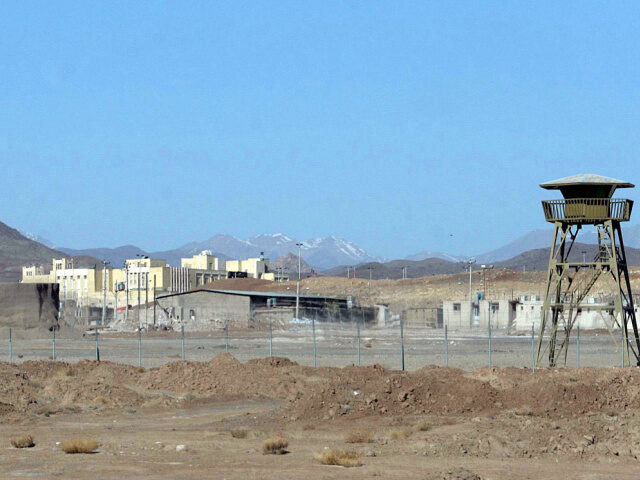Iranian Dissident Group Reveals Regime’s Covert ‘Desert Plan’ Nuclear Bomb Program

Iranian opposition group NCRI has unveiled explosive new evidence alleging that Iran’s nuclear weapons program has resumed under the direct supervision of Supreme Leader Ayatollah Ali Khamenei, representing a serious escalation with far-reaching implications for global stability and regional security.
In a Tuesday press conference, Alireza Jafarzadeh, Deputy Director of the National Council of Resistance of Iran (NCRI)’s Washington Office, detailed findings from the People’s Mojahedin Organization of Iran (PMOI/MEK), exposing Iran’s clandestine Kavir Plan — a covert nuclear weapons program disguised as satellite-launching missile research.
The plan allegedly involves multiple secret facilities concentrated in Semnan Province, a vast desert region west of Tehran designated as a military zone since 2009.
The Kavir Plan, initiated by Khamenei in 2009, replaced the previous Amad Plan, which was exposed and shut down in 2003. It consists of boosted nuclear warheads for missiles exceeding 2,000 miles — capable of striking U.S. bases in the Middle East and key European cities.
To mask the Kavir Plan, the regime claims its goal is “desert security,” while covertly advancing nuclear weapons under the guise of manufacturing satellite-launching missiles, according to the NCRI.
The group identified seven sites tied to the secret plan, including Shahroud and Semnan, developing nuclear warheads for solid- and liquid-fueled missiles. Ivanaki handles weapon components, Sanjaran builds shock wave generators, and Sorkheh Hesar conducts underground explosive tests. Parchin (Project 6) produces explosives and runs nuclear-related experiments, all under the direction of SPND headquarters in Tehran’s Noor Building.
Jafarzadeh highlighted that Iran has deployed extensive counterintelligence operations to shield Semnan’s nuclear developments from prying eyes. The regime has removed shortcut roads between Semnan, Yazd, and Isfahan from official maps, deployed drones with facial recognition cameras to monitor activity, and established intelligence bases such as the Kavir Security Unit and Sahib al-Zaman Base to enforce secrecy.
In addition, foreign nationals — particularly American and European researchers — are closely monitored, with multiple reports of arrests and interrogations aimed at limiting outside exposure.
The regime’s aggressive counterintelligence posture, according to the NCRI, is not solely about concealing its nuclear activities — it also reflects mounting fears of internal collapse.
Speaking with Breitbart News, Jafarzadeh underscored that the threat posed by the MEK and its Resistance Units is viewed by Tehran as existential. He cited a recent sermon by senior cleric Ahmad Khatami, who warned that the MEK could achieve a “swift overthrow” of the Islamic Republic — a rare public admission of the group’s potency.
According to Jafarzadeh, the regime’s obsession with the MEK is evident in its repeated invocation during Friday prayers and official discourse. Drawing a parallel to the sudden fall of the Assad regime’s control in Syria, he argued that Iran’s leadership is increasingly anxious that worsening economic conditions, nationwide unrest, and near-daily confrontations with the Revolutionary Guards could trigger a similar outcome.
Meanwhile, with nuclear talks at a critical juncture, the International Atomic Energy Agency (IAEA) formally declared Iran in breach of non-proliferation obligations for the first time in nearly 20 years.
In response, the U.S. withdrew non-essential embassy staff from Iraq, signaling heightened tensions. The State Department offered departure options for personnel in Bahrain and Kuwait, while Defense Secretary Pete Hegseth authorized the voluntary departure of military dependents across the Middle East.
The NCRI argues that the time for diplomatic engagement has passed, urging Western nations to trigger the UN’s snapback mechanism, reinstating all sanctions and Security Council resolutions before they expire in October.
Their policy blueprint demands the complete shutdown of all Iranian nuclear sites, verified through unrestricted IAEA inspections, and the elimination of Iran’s ballistic missile program, critical for nuclear warhead deployment. They also call for zero exemptions for military or civilian nuclear facilities, ensuring full transparency.
Last month, the NCRI presented intelligence indicating that Iran is developing “boosted” nuclear warheads at a secret military site disguised as a chemical plant, while accusing Tehran of expanding its nuclear arsenal with hydrogen bomb capability.
The NCRI, through its affiliate PMOI/MEK network, previously revealed secret sites at Natanz, Arak, and Fordow — later confirmed by international watchdogs. Thursday’s announcement, they contend, follows that same pattern of denial, exposure, and delayed accountability from Tehran.
In December, the prominent dissident group revealed that the Iranian regime was “intensifying” its secretive development of nuclear detonators at covert facilities
The development comes amid heightened tensions over stalled nuclear talks and fresh threats of military retaliation from Tehran.
In May, Iran unveiled a new solid-fueled ballistic missile, claiming it has stationed similar systems nationwide, according to state-run TV, which cited military officials promising the ability to strike U.S. bases and interests “wherever they are” if war breaks out.
Joshua Klein is a reporter for Breitbart News. Email him at [email protected]. Follow him on Twitter @JoshuaKlein.